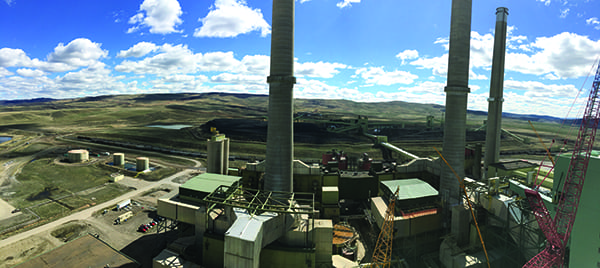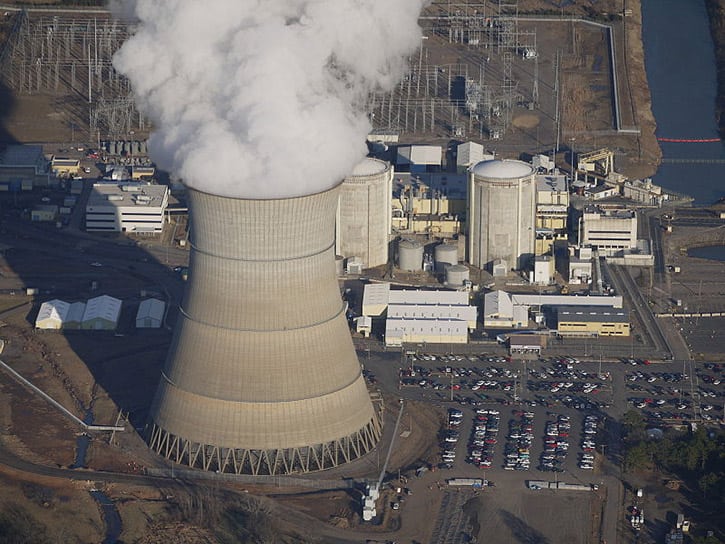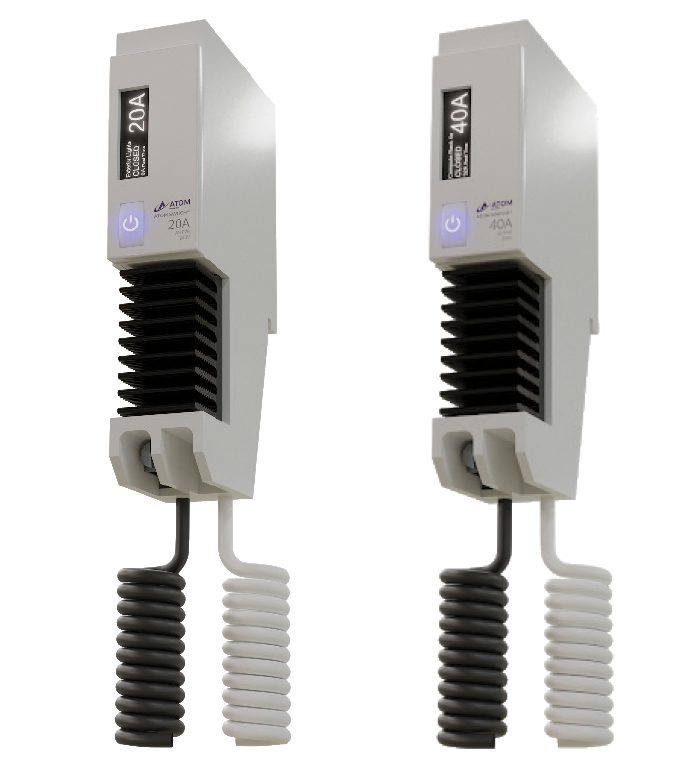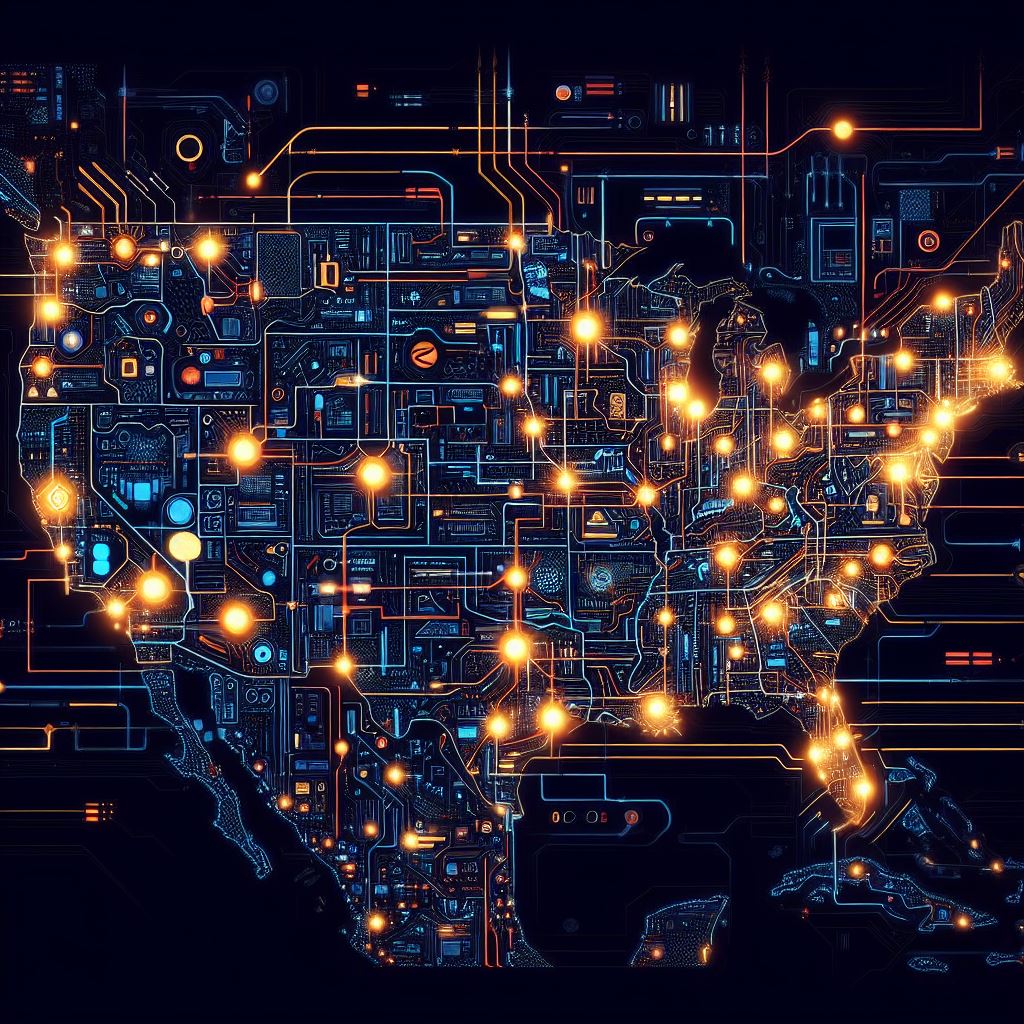The transformation of the power landscape involves more than just generation. The distribution of electricity is being changed as well, with technology designed to make electrical systems safer, more reliable, and more efficient.
Atom Power, which last year introduced the first digital circuit breaker, is among the companies engineering change in the power sector. Atom, headquartered in Charlotte, N.C., and founded in 2014 by CEO Ryan Kennedy and CTO Denis Kouroussis, designs and manufactures a suite of products for the power sector, and does it “with a purpose rooted in innovation and safety,” according to the company.
Atom Power’s products include the Atom Switch circuit breaker, the Atom Panel distribution panel, and its Atom OS software, which “can intelligently control the flow of electricity to and from buildings and things.”
The company’s innovations provide support for distributed energy, enable sustainability, and promote efficiency in the use of electricity. Kennedy recently provided insight into how Atom Power works with those involved with electrical infrastructure and systems.
POWER: What inspired you to start Atom Power?
Kennedy: I started my career as a commercial electrician after high school, and during my couple weeks in the field, I witnessed an arc flash explosion that showed me just how dangerous and deadly electricity could be. From there, I went to college to become an engineer and worked on construction and design projects for commercial and industrial buildings. I continued experiencing the shortcomings of our electrical infrastructure and discovered that most of these pain points tied back to the mechanical nature of circuit breakers. So, I set out to make the circuit breaker digital and Atom Power was born. We brought the world’s first digital circuit breaker to market in May 2019.
POWER: What are some of the pain points you discovered about traditional circuit breakers?
Kennedy: Circuit breakers are the fundamental safety component in every electrical system; they protect the flow of power in every building today. Despite that fact, most circuit breakers are analog devices that haven’t changed much since they were invented in [Thomas] Edison’s lab 140 years ago. Their mechanical parts make them slow, static, and more susceptible to short circuits and explosions. Without connectivity, they’re siloed and incapable of relaying important data.

POWER: How do these challenges impact modern power management?
Kennedy: The reality is that our modern power needs have outgrown the limitations of mechanics. We have the potential to build a strong network of distributed energy resources (DERs) as more renewables, battery storage, electric vehicles [EVs] and other clean energy technologies come online.
Despite that progress, we still don’t have the ability to tie all of these sources together or transfer between them in a way that’s fluid, effective, repeatable, and without any degradation to the electrical system. These challenges really begin at the circuit-breaker level where mechanics create a series of bottlenecks. If we want to add multiple DERs onto a building today, in most cases we would need to rewire, add expensive hardware, and even pay for more service from a utility. The barriers to adoption are extremely high.
POWER: What are the key components and features of the technology?
Kennedy: Our digital breaker, the Atom Switch, uses semiconductors to control the flow of power instead of mechanical parts. Each Atom Switch is stacked inside our Atom Panel distribution panel and intelligently managed by our own Atom OS software. This combination bridges the gap between the physical and digital worlds, making digital power management a reality.
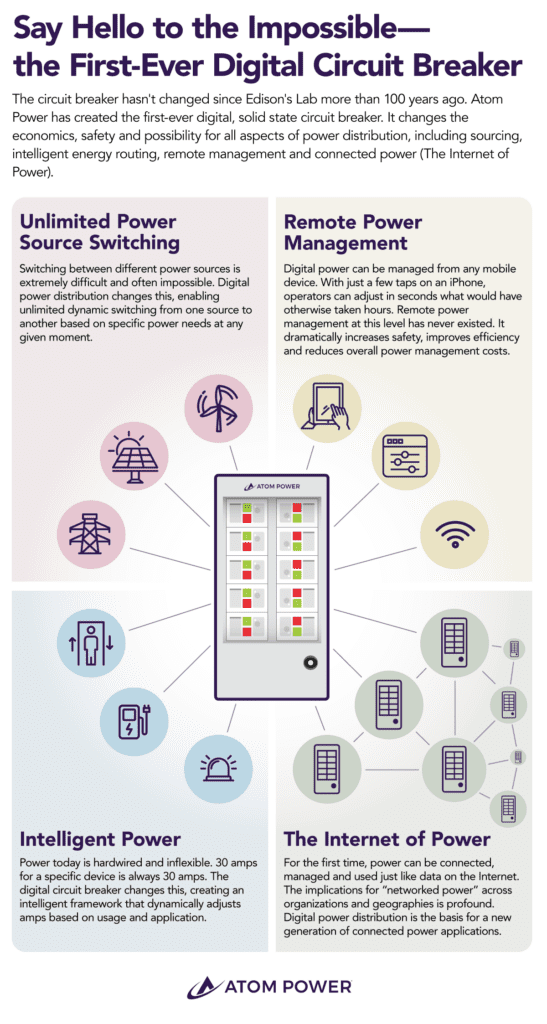
POWER: How does the Atom Switch compare to a traditional mechanical breaker?
Kennedy: The Atom Switch is much more than just a breaker. It offers full digital remote control, has built-in metering, the ability to change its characteristics through software, transfer switching, and just happens to be the fastest circuit breaker in the world. It can predict and prevent surges, and its demand management capabilities respond to load changes in real time. Any user can digitally adjust each breaker’s amperage to meet their needs. Our digital power management system replaces the need for hundreds of components used in commercial power distribution today.
Because of its unique blend of software and semiconductors, the Atom Switch is the fastest circuit breaker in existence. It’s 3,000x faster than most mechanical circuit breakers, enabling circuit interruption capabilities up to 150,000 amps, which is the upper limit for circuit breakers today. This speed virtually eliminates the possibility of arc flash and makes it possible to instantly switch among any number of power sources without the lights so much as flickering. Plus, it can be controlled from anywhere with a computer or smart device.
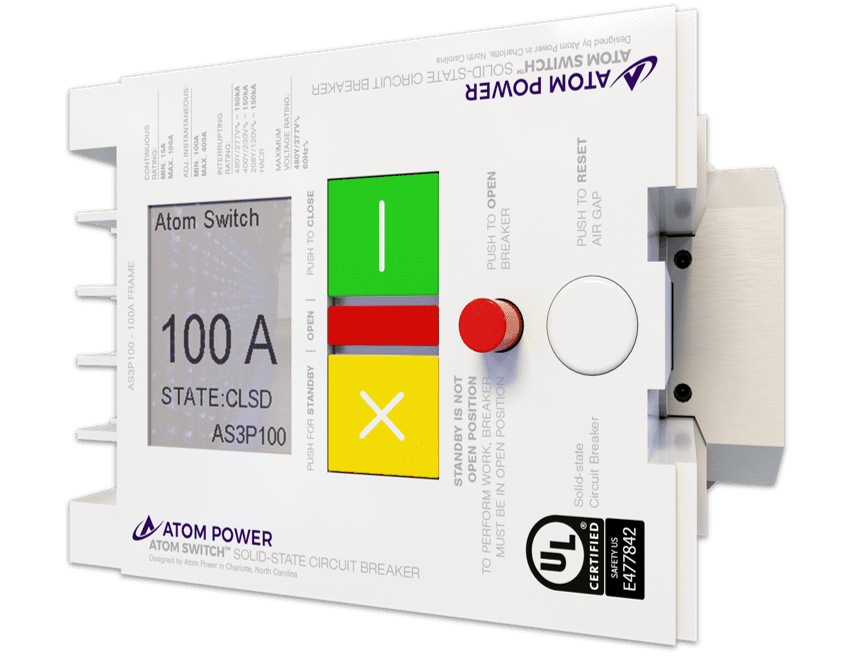
POWER: Is digital circuit breaker technology scalable?
Kennedy: You could adapt and scale digital circuit breaker technology for practically any power system. This offers huge manufacturing advantages because it uses the same software, control system, and semiconductors. In EVs, we see the same fundamental battery technology used in a car or semi truck, just at a different scale. The same is true of our digital circuit breaker. Our technology is not only scalable, but it’s also significantly easier and faster to scale and customize than mechanical breakers today.
POWER: Are there specific use cases where a digital circuit breaker will have a particularly significant impact?
Kennedy: A digital circuit breaker can be used across industries for any building that requires power, but it particularly shines in high-stress environments like industrial factories, data centers, EV charging stations, and any essential system that requires redundancy and consistent power. Our customers span from utilities and data storage facilities to engineering firms and food and beverage manufacturers. We hope to expand into residential in the near future.

POWER: Data centers are one of the fastest-growing construction segments in the U.S., and with growth comes massive power demands. Can you describe the work you’re doing there?
Kennedy: As power density increases in data centers, so does the amount of heat generated, which means additional liquid cooling systems are needed at the rack level. The problem is these cooling systems require redundant pumping systems and are sensitive to the rate and quality of incoming power. When a cooling pump loses power, the switchover to a backup source can disrupt the operation of the cooling system, which dramatically increases the risk of overheating and losing data. Our technology helps overcome this challenge by enabling a rapid transfer between various power sources. Data center operators can switch to a backup power source within microseconds, which significantly reduces the risk of losing power or valuable information. It also makes it more realistic for a data center to adopt dynamic renewable energy sources like solar.
POWER: Why haven’t others in the industry previously been able to create a digital breaker?
Kennedy: The power industry has long recognized the need for a digital circuit breaker. Until very recently, semiconductors weren’t advanced enough to manage significant volumes of energy in an affordable, compact way. My team and I achieved what larger, well-known companies could not by leveraging advances in material sciences that made semiconductors smaller and more powerful. We’re currently the only company manufacturing silicon carbide (SiC) semiconductors specifically for circuit protection, which reduces costs and creates a more manufacturable breaker.
POWER: Have you seen any new use cases emerge because of the COVID-19 pandemic?
Kennedy: Remote-work orders and stay-at-home mandates shined a light on our need for remote power management and smarter building design. We’ve seen a dramatic increase in the number of people working from home, which means many commercial office buildings require significantly less power, but they lack a way to manage their power usage remotely. Our digital breaker solves this challenge by allowing users to control power from anywhere, at any time. Its remote power management capabilities help buildings maximize energy efficiency by reducing wasted power when no one is working in them. This pandemic is an unprecedented moment in time, but it has also created an opportunity for stakeholders like utilities, businesses, and city planners to put more innovative infrastructure in place.
POWER: What’s next for Atom Power? How will you apply your technology in the short and long term?
Kennedy: With our recent $17.75 million Series B funding round, our plan is to continue scaling our power management platform and develop new use cases to address industry-wide challenges. In the coming months, we’re zeroing-in on the applications of our technology for EV charging infrastructure. As EV adoption increases, access to critical charging infrastructure remains inadequate, especially in high-density urban areas. We plan to unveil a new offering that will dramatically change how EV charging is deployed, and help save energy and costs through demand-side management.
POWER: What advice do you have for the industry as it works toward a more resilient and efficient power grid?
Kennedy: Commercial and industrial engineers, building managers, utility operators, and policymakers should take a critical look at the power infrastructure all around us. You’ll find that it’s a cobbled-together, disaggregated system that gives us very limited visibility and a rudimentary level of control, at best. As we bring more solar and wind online, and as we electrify more cars and buildings, keeping distribution grids running smoothly will become a bigger and bigger challenge. It’s more important than ever that we put technology in place that can adapt and respond to a dynamic power ecosystem in real time.
—Darrell Proctor is associate editor for POWER (@DarrellProctor1, @POWERmagazine).





